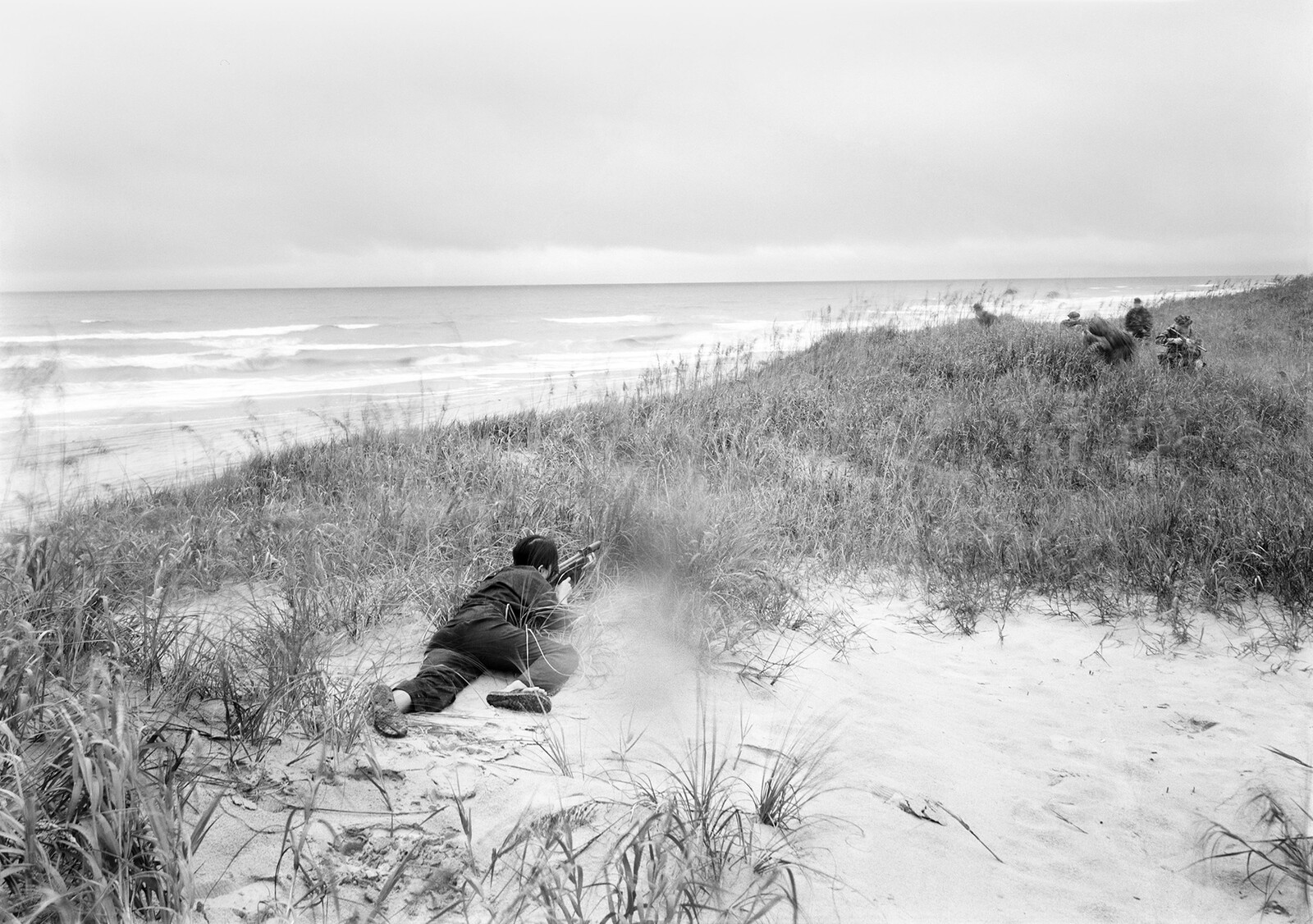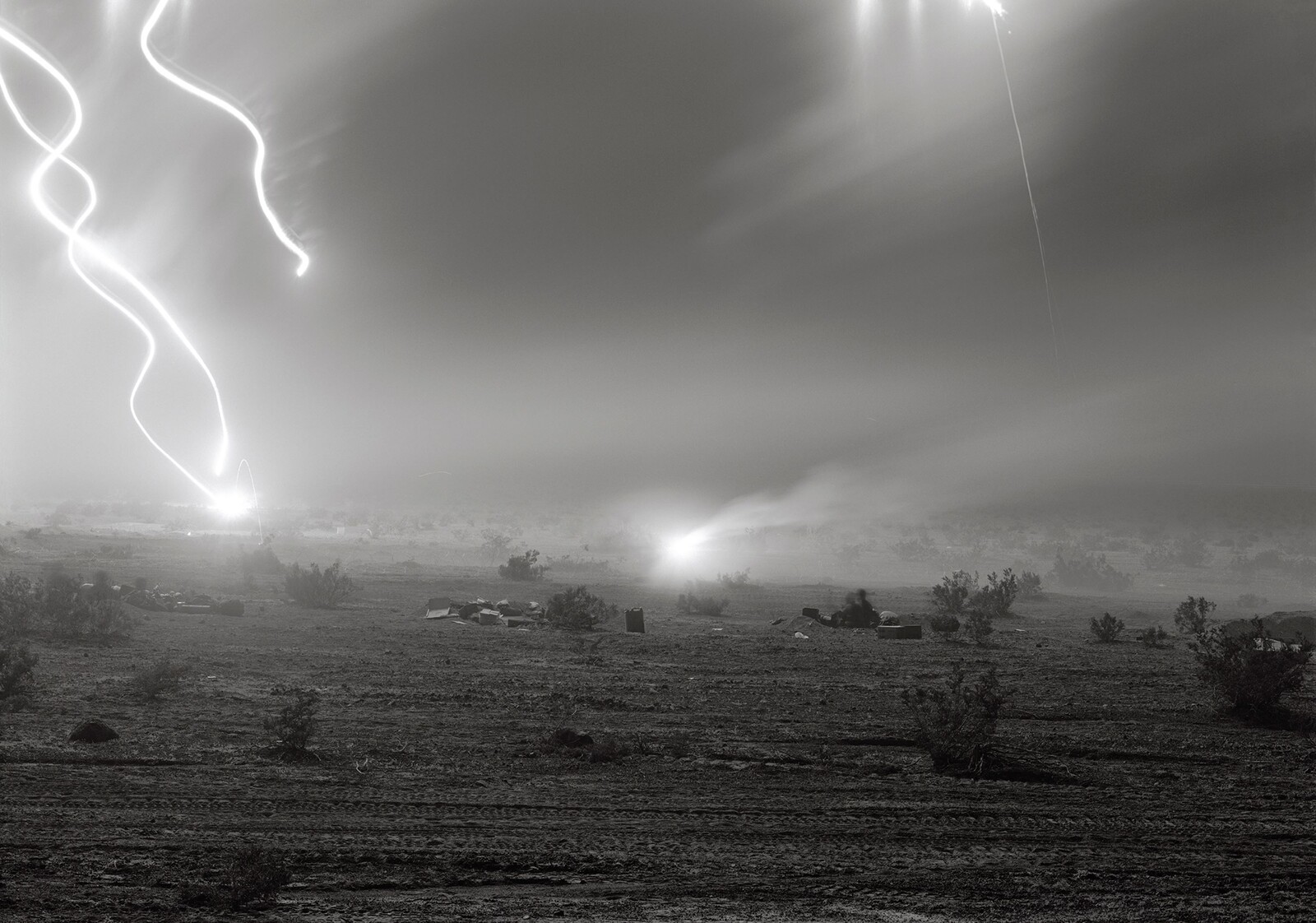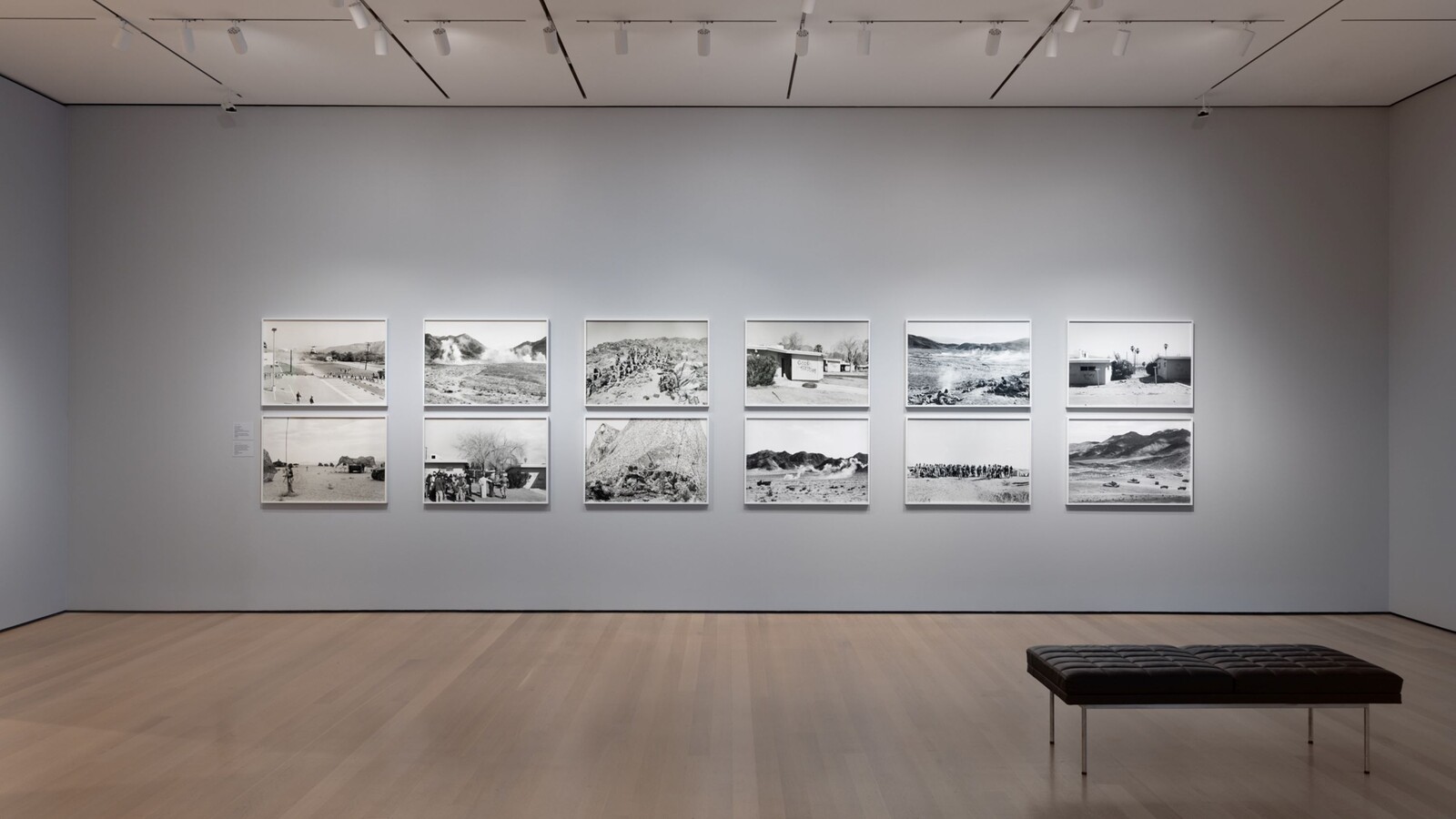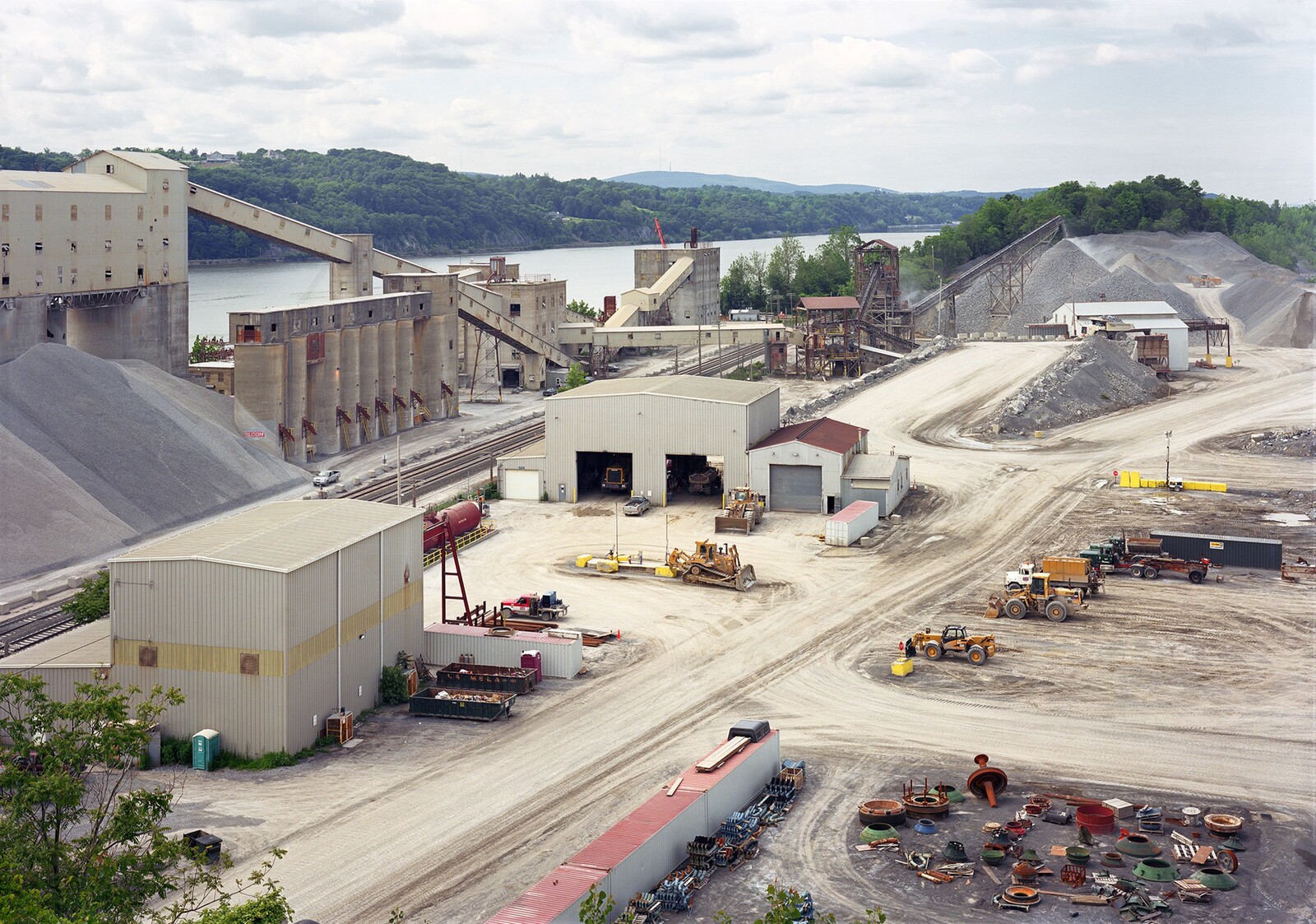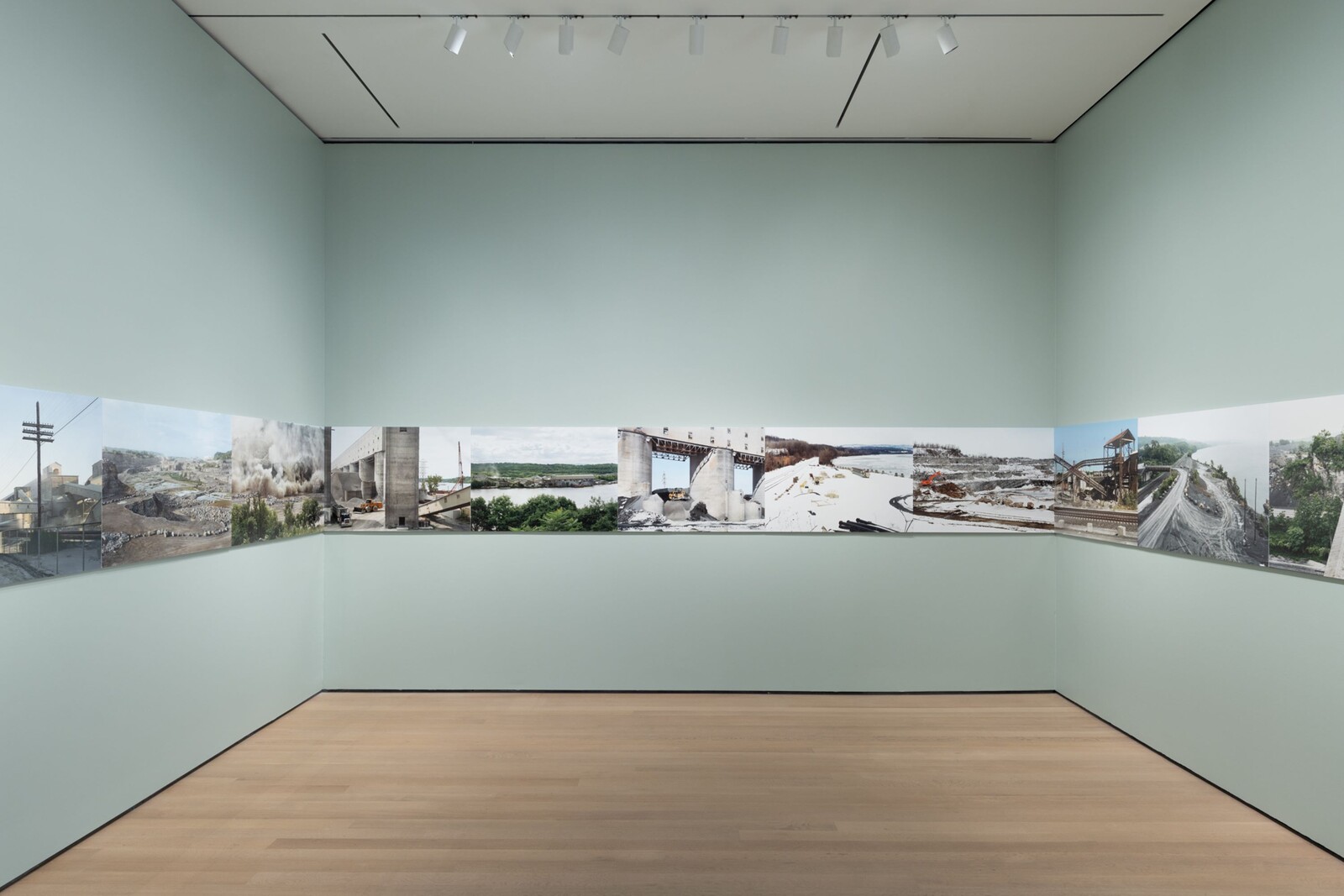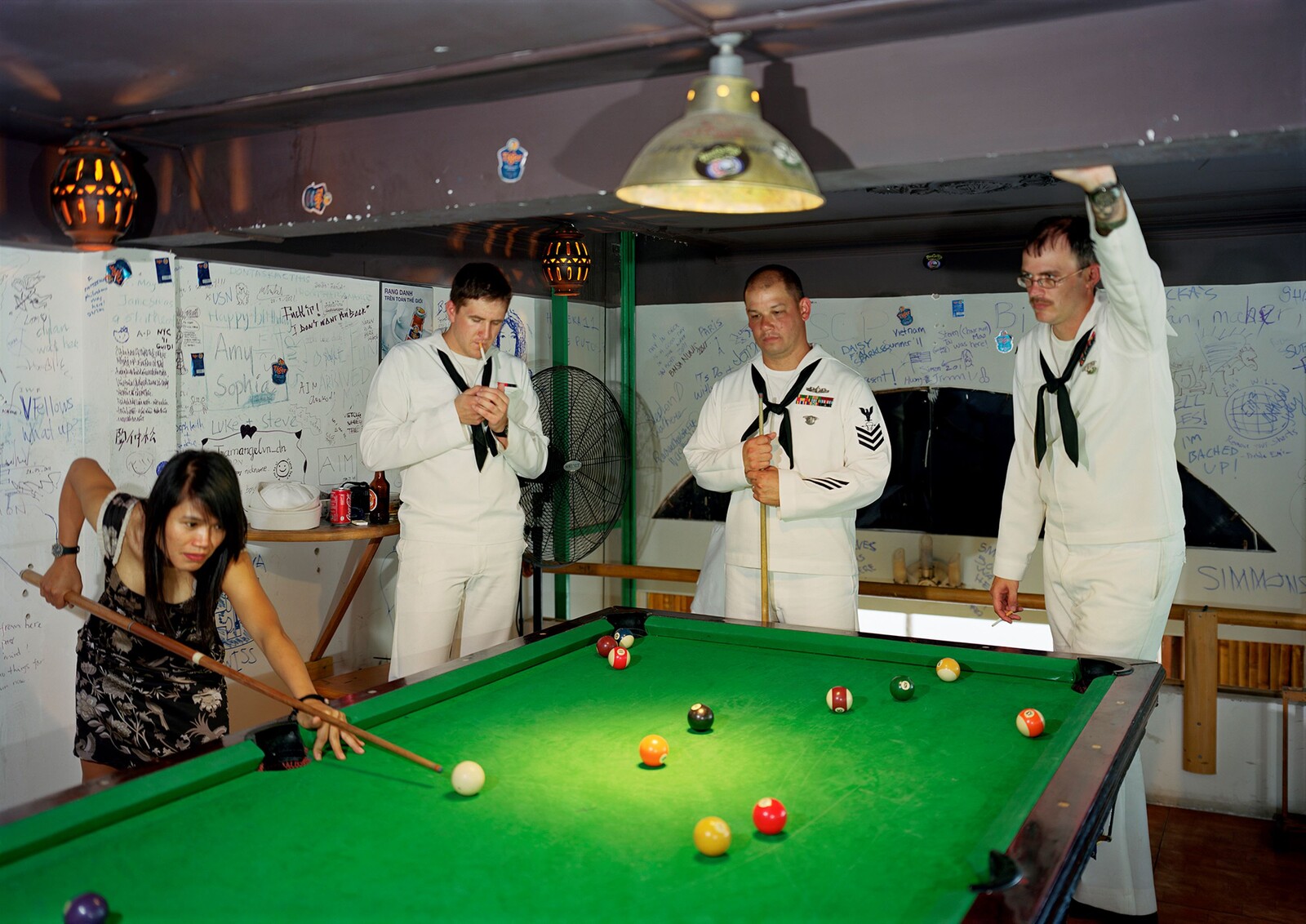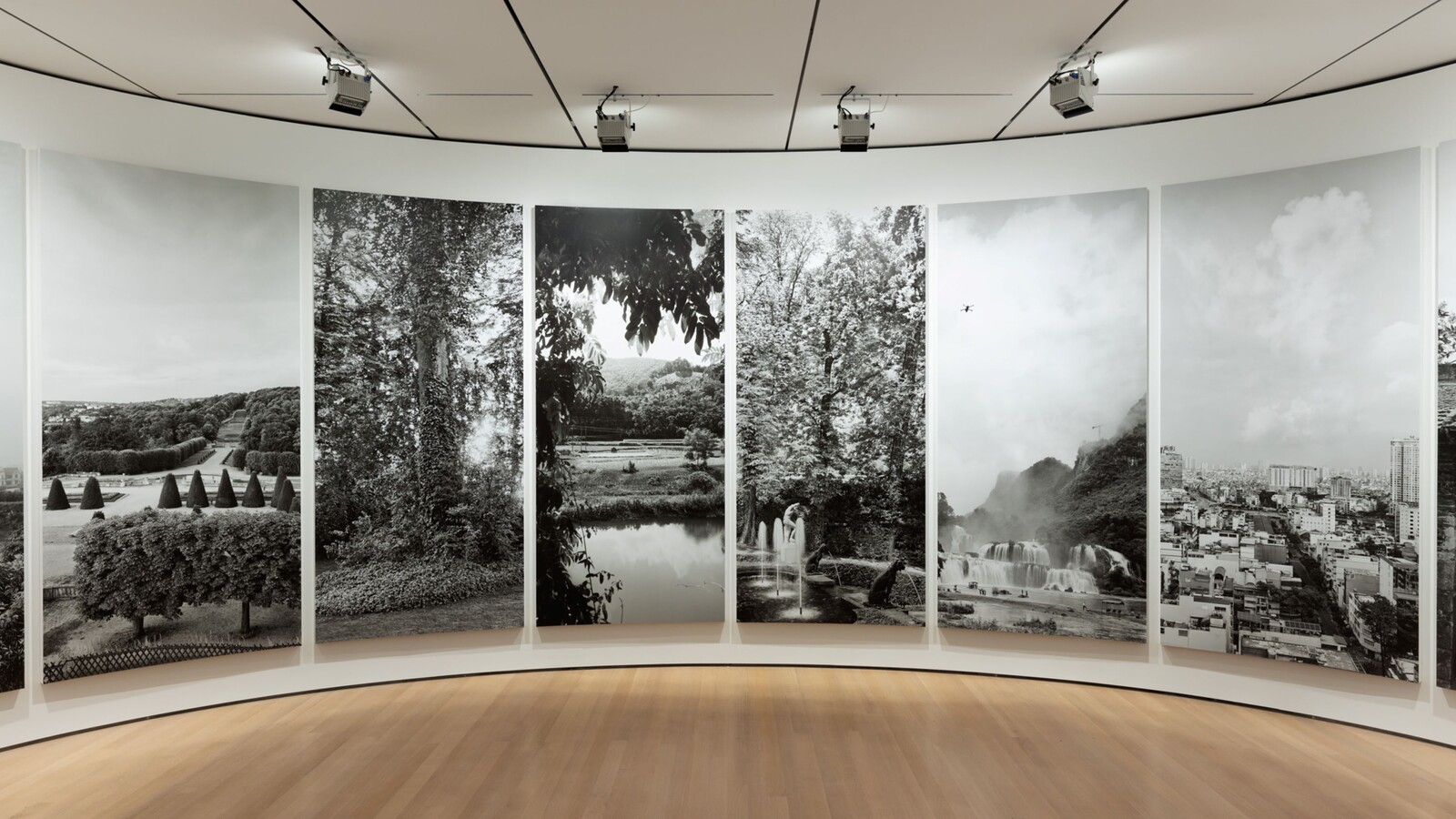In 1968, army photographer Ron Haeberle shot Vietnamese civilians indiscriminately massacred by US ground forces in the hamlet of Mỹ Lai. His photographs circulated widely—including a color photo of corpses strewn across a road featured in LIFE magazine that, in 1970, with support from the Museum of Modern Art, the Art Workers Coalition incorporated into an antiwar poster overlaid, in blood red, with the text “Q. And babies? A. And babies.” When MoMA withdrew its support for the poster, AWC staged a protest to illuminate board members’ tacit support of the war in Vietnam. The museum promptly assimilated AWC’s poster into their own collections, institutionalizing institutional critique.1
Half a century later, MoMA exhibits “Between Two Rivers/Giữa hai giòng sông/Entre deux rivières,” a survey of multimedia works by Vietnam-born An-My Lê, whose large-format photographs are known for their staging and depictions of militarized landscapes. Lê focuses on what the visual reveals and obscures; how a range of quotidian landscapes may be conceived as “always already military.”2 Though Lê left Vietnam as a teenager after the fall of Saigon in 1975, the specter of war and its spectacularization informs her approaches to representation. In “Viêt Nam” (1994–98), Lê returns to her birth country for the first time since her family’s exodus to the US, in search of an intimacy that could only be detected in the familiar landscape.
Yearning to inhabit the past, Lê then joins and documents Vietnam War reenactments in the US south through black-and-white photographs collected as “Small Wars” (1999–2002). Donning the attire and role of a communist turncoat, Lê’s participation lends a smidge of racial accuracy to the reenactors’ pursuit of authenticity while simultaneously calling it into question. Lê continues exploring the vague boundary between fantasy and social reality in “29 Palms” (2003–04), a series of combat photographs portraying rehearsals for the Iraq War staged in the Californian desert of Twentynine Palms, transformed by US Marines into a simulacrum of the Middle East.3
Lê uses photography to gain access to fortified sites of US militarization, edging a line between critique and celebration. In her next series, “Events Ashore” (2005–14), Lê boards Navy vessels with her Deardorff camera to compose color photographs of noncombat expeditions across more than twenty countries. The images capture the sheer scale, breadth, and pervasiveness of these imperial missions, which included humanitarian efforts in Asia and Africa as well as scientific pursuits in the polar regions. In keeping with the visualization of empire’s universals, Lê’s latest project “Silent General” (2015–ongoing) takes its title from a Walt Whitman poem highlighting how the everyman (and everyplace) gains access to power through their social reproduction of US empire.
The subjects and places in Lê’s photographs range from the Mississippi to the Mekong Rivers, exemplifying the different ways in which visuality can affirm military omnipresence. In opposition to photojournalism’s desire to produce evidence via spectacle, transparency, and distanced witnessing, Lê’s photographic representations insist upon the banal and enduring aspects of visualizing warfare, dwelling upon the scales, continuities, and absorptions of conflict from within US hegemony.4 Her interrogation of the visual realm references how the war in Indochina inaugurated what Paul Virilio has called a “new staging” reliant on improvements in detection and perception through the twinned visual enterprises of war and cinema.5
Taking the staging of warfare seriously, Lê produces allegories that heed the mechanisms by which documentary wrests with reality: a mode of “mimetic frisson” that alludes to yet refuses the principles of photojournalism by foregrounding, in Wendy Kozol’s words, “the caesura … between the real and its representations.”6 For example, in “Someone Else’s War (Gangbang Girl #26)” (2016–23), embroidered tapestries depict screenshots from a pornographic period piece, Gangbang Girl #26 (2000), featuring a group of US soldiers fornicating with two women who are supposed to be Vietnamese sex workers. As representations of an imaginary, “Someone Else’s War” suspends the fantasy of multicultural conquest to highlight colonial solicitation of the gaze and desire. Lê attends to both the evidentiary and imaginary imperatives of imaging to interrogate how vision and visibility sustain modern subjectivities—albeit at the expense of a gendered, sexualized, and racialized other.
This context amplifies the contradictions of exhibiting warfare in the context of an institution historically supported by imperial extraction. Lê’s survey of ordinary landscapes carved by US militarism includes “Trap Rock” (2006-07), a series commissioned by Dia Beacon portraying quarry excavations in the museum’s vicinity, which indexes a lengthy geologic history of capital and military extraction. These works prompt us to consider the spatial production of art institutions, an especially prescient imperative amidst the current Israeli bombardment and destruction of Palestine: the last time the state of Israel launched an air attack over Gaza in 2021—killing at least 256 Palestinians and maiming many more—artists, scholars, critics, and activists campaigned for a strike of MoMA by shedding light on its board members’ involvement in support of the Israeli occupation.7 In this context, MoMA’s endorsement of Lê’s anticolonial art-making risks looking like a state of exception at best, art-washing history at worst.
The inclusion of An-My Lê’s work props up the paramnesiac engine of the modern necromuseum, per Paul Preciado, “an archive of our own global destruction” that valorizes protest after the fact of injury.8 The past tense of “Vietnam” whets liberal appetites for racially attentive consumption while forgetting—and forgiving—past and prevailing institutional violence. In other words, an appreciation for war photography requires aesthetics to be extricated from its militarized context—a feat that can only be achieved through spatial, temporal, and political dissociations. Lê’s work embodies this predicament, juxtaposing aesthetic arrangements with violence, yet modernity cannibalizes history to fund its own future, exploiting bloodshed—both real and representational—for profit. One can only hope that viewers transpose Lê’s interconnected scenes of militarized violence onto the site of its staging to counter the museum’s implied exemption from modern warfare.
Ricardo Chavez, “An Institutional Defense Mechanism: How the Museum of Modern Art Institutionalized Critique,” Rutgers Art Review: The Journal of Graduate Research in Art History vol. 38 (2022): 1–23.
A phrase borrowed from Micol Seigel that captures the porosity between places to be policed. See Micol Seigel, “Always Already Military: Police, Public Safety, and State Violence,” American Quarterly vol. 71, no. 2 (June 2019): 519–39.
Much like how the US military utilized the racialized jungle and inhabitants of Hawai’i to “stage” the Vietnam War in the 1960s. See Simeon Man, “Aloha, Vietnam: Race and Empire in Hawai‘i’s Vietnam War,” American Quarterly vol. 67, no. 4 (December 2015): 1085–1108.
For more on the role of photography in the so-called Vietnam War, see inter alia: Sylvia Shin Huey Chong, The Oriental Obscene: Violence and Racial Fantasies in the Vietnam Era (Durham: Duke University Press, 2011); Mimi Thi Nguyen, The Gift of Freedom: War, Debt, and Other Refugee Passages (Durham: Duke University Press, 2012); Thy Phu, Warring Visions: Photography and Vietnam (Durham: Duke University Press, 2021).
Paul Virilio, War and Cinema: The Logistics of Perception, trans. Patrick Camiller (London and New York: Verso Books, 1989), 103.
Wendy Kozol, Distant Wars Visible: The Ambivalence of Witnessing (Minneapolis: University of Minnesota Press, 2014), 177.
“Angela Davis, Fred Moten, and 250+ Artists Sign Letter Condemning MoMA’s Ties to Violence Against Palestinians,” Hyperallergic (May 21, 2021), https://hyperallergic.com/647574/angela-davis-fred-moten-and-250-artists-sign-letter-condemning-moma-ties-to-violence-against-palestinians/.
Paul B Preciado, An Apartment on Uranus: Chronicles of the Crossing (Los Angeles: Semiotext(e), 2020), 111.
